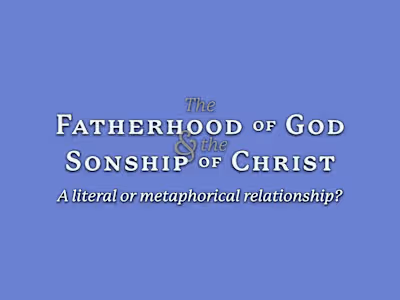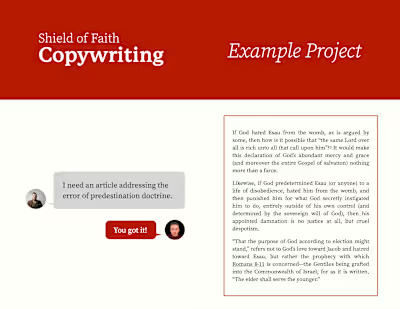The Cosmology Chronicles | Part 3: Ancient Hebrew Cosmology

And they that be wise shall shine as the brightness of the firmament; and they that turn many to righteousness as the stars for ever and ever.
Introduction
The cosmology presented to us in the Bible is known to us today as ancient Hebrew cosmology. The ancient Hebrews understood the Earth as a flat plane standing in and surrounded by waters, but the majority of scientism-proponents, even professed Bible-believers, deliberately ignore this fact.
Beware lest any man spoil you through philosophy and vain deceit, after the tradition of men, after the rudiments of the world, and not after Christ.
Colossians 2:8
For this they willingly are ignorant of, that by the word of God the heavens were of old, and the earth standing out of the water and in the water:
2 Peter 3:5
Even young earth creationists, who, professing to hold to a literal interpretation of Genesis 1, derive their answers not from the Word of God, nor from what is self-evident in creation (for which reason they are without excuse), but rather from that which is falsely called “[secret] knowledge” (gnōsis):
O Timothy, guard that which is committed unto thee, turning away from the profane babblings and oppositions of the knowledge which is falsely so called; which some professing have erred concerning the faith.
1 Timothy 6:20-21 (ASV)
Supposing themselves wise, they perpetuate absurdities all the while with an air of rationale and sensibility, making God a liar by teaching for doctrine the philosophies of men. But after all, it is indeed the foolish things of the world that God has chosen to confound the wise.4
But who did the ancient Hebrews receive their knowledge of cosmology from?
The First Cosmologist
Though not a Hebrew, the first cosmologist was Adam, who was created with a perfect knowledge of the architecture and engineering of YAH’s creation. This perfect knowledge would become, albeit perverted, that of all other (non-Hebrew) cosmologies of the ancient Near East. Following the fall and consequently his expulsion from the Garden of Eden, by word of mouth, Adam passed on this magnificent knowledge for many hundreds of years, wherefore it became the understanding of Moses and the ancient Hebrews, who knew the Earth to be a stationary5 plane with a face.6
The Tripartite Cosmic Structure
The Hebrew conceptualization of creation consisted of three cosmic categories according to those established in the first chapter of Genesis:
the Heaven7
the Earth8
the Seas9
the creatures of which cosmic categories God gave man dominion over on the sixth day of the creation:
And God blessed them, and God said unto them, Be fruitful, and multiply, and replenish the earth, and subdue it: and have dominion over the fish of the sea, and over the fowl of the air, and over every living thing that moveth upon the earth.
Genesis 1:28
Knowing this, (in addition to the fact that Jewish authors such as Josephus upheld the very same Hebrew cosmology, and moreover that Jesus himself never once corrected the apostles’ view of creation), do any grounds remain at all upon which it may be supposed that all the Biblical authors were simply describing creation from an observer’s point of view,—or worse, that they merely spoke allegorically? Verily this is preposterous reasoning, most especially for the true Bible-believing Christian. Whereby we have a more sure word that the Bible teaches a functionally true cosmology as much as it does one that is true materially.
Moreover, the Second Commandment reads:
Thou shalt not make unto thee any graven image, or any likeness of any thing that is in heaven above, or that is in the earth beneath, or that is in the water under the earth:
Exodus 20:4
And once more, the Fourth Commandment reads similarly:
For in six days the LORD made heaven and earth, the sea, and all that in them is, and rested the seventh day: wherefore the LORD blessed the sabbath day, and hallowed it.
Exodus 20:11
The Firmament (called Heaven)
The word “firmament” is an English transliteration (from the Latin word “firmamentum”, which itself was a transliteration from the Greek word στερέωμα [stereōma - G4733] for the Latin Vulgate), invented by the King James translators to do justice to the Hebrew word רָקִיעַ [râqîyaʻ - H7549]—(from the Hebrew root רָקַע [rāqaʿ - H7554])—which irrefutably denotes firmness and solidity. The same definition is found in the Greek word στερέωμα (stereōma) in the Septuagint translation of the Hebrew Bible. Stereōma is also mentioned once in the Textus Receptus by Paul in Colossians 2:5 translated as steadfastness, a word which denotes firmness in faith, purpose, etc., as well as constancy or steadiness of mind. According to the American Dictionary of the English Language (Webster’s 1828), “steadfastness” has two definitions:
n: Firmness of standing; fixedness in place.
n: Firmness of mind or purpose; fixedness in principle; constancy; resolution; as the stedfastness of faith.
P. Seely has traced the developments of beliefs about the sky. He demonstrates that intertestamental and rabbinic speculation sometimes focused on the material that the sky was made of and how thick it was. The early Christian writers likewise were united in their belief that the sky was solid. Seely concludes: “Astonishing as it may seem to the modern mind, with very rare exceptions the idea that the sky is not solid is a distinctly modern one. Historical evidence shows that virtually everyone in the ancient world believed in a solid firmament. (Walton)
Addressing his fellow professional Bible translators in the Journal of Translation, the senior linguist John R. Roberts concludes from the linguistic data that “the Hebrew makes it explicit” that the biblical firmament—the raqia “should be conceived of as a solid dome with a surface.” (Stanhope)
They believed also that the firmament rests upon pillars.13
God is enthroned upon the waters above
In the Old Testament the heavenly waters are sometimes called the mabbûl, above which Yahweh is enthroned (Ps. 29:10) and which were released in the time of Noah (Gen. 7:10). (Walton)
Israel’s God abides over a heavenly flood in Psa 104:2-3: “He stretches out the heavens like a tent cloth. He lays the beams of his upper chambers in the waters.” Jer 10:13 says, “When God’s voice thunders, there is a tumult of waters in the heavens.” As emphasized, Gen 1:7 also mentions these “waters above,” and the psalmist declares, “praise him you waters above the heavens!” When the Bible talks about the throne of God resting above a flood in the sky, it is relating an idea common in the ancient Near East. (Stanhope)
Is eternity “another universe” or “higher dimension”?
God is indeed unchanged and unaffected by time (in fact, time is in subjection to His purposes), but this does not mean that He exists in some far off realm or “other dimension” called eternity, as some would foolishly render Isaiah 57:15 to mean. Rather, “inhabiteth eternity” speaks on this wise: concerning one of His divine attributes—that He lives (continues; exists; remains; abides; tarries; endures) forever and ever, and that God was before the world (ages) began; before He created all things. As Paul wrote to Timothy, God “only hath immortality”.20 Now, eternity refers not only to that which was before the world began, but also that which shall be after this present world ends. God, not a “spiritual plane” in some hypothetical “other universe”, is the subject which eternally lives (and who has promised immortality freely to all those who love Him).
Are the lights embedded in the firmament?
Some Biblical cosmologists today, having accepted a view held by flat earth critics (determined to slander believers by misrepresenting ancient Hebrew cosmology), suppose Genesis 1:14-18 to mean that the lights (sun, moon, and stars) are embedded inside (or fastened to) the firmament itself, so as to be considered a part of its material structure. However, there are no indications by any means that the ancient Hebrews believed this. Rather, they considered the firmament as a crystalline vault, and neither Moses, Job, or Ezekiel illustrate the firmament as though the greater light, lesser light, and all the stars are part of its integral structure.
But if there be any doubt, let us hear it from a first century Pharisee:
After this, on the second day, he placed the heaven over the whole world, and separated it from the other parts; and he determined it should stand by itself. He also placed a crystalline [firmament] round it, and put it together in a manner agreeable to the earth, and fitted it for giving moisture and rain, and for affording the advantage of dews. On the third day he appointed the dry land to appear, with the sea itself round about it; and on the very same day he made the plants and the seeds to spring out of the earth. On the fourth day he adorned the heaven with the sun, the moon, and the other stars; and appointed them their motions and courses, that the vicissitudes of the seasons might be clearly signified. (Josephus, Antiquities)
The Earth (dry land)
“Earth” is the name for which God gave to the dry land (ground, field, soil)—as in the surface of earth beneath our feet.21 To the ancient Hebrews, the meaning of “earth” solely represented dry land as a surface and substance that was completely independent of the “sea”.
Unlike today, wherein the minds of men “Earth” signifies a spherical world called a “planet” that all-encompasses both dry land and sea, the Hebrews made proper distinction between the two. The Hebrew word מַזָּלוֹת which the King James translators rendered “planets” [mazzālôṯ - H4208] in 2 Kings 23:5 was most likely used originally to denote the 36 constellations of the 12 Zodiacal signs, whereas the Hebrew word מַזָּרָה [mazzārâ - H4216] transliterated “Mazzaroth” may have denoted a specific constellation (see Job 38:32).
The Sea (waters under the Heaven)
The Hebrew word for “Seas” is יָם (yām) in the singular or יָמִים (yǎm-mîm) in the plural [H3220], which is the name for which God gave to the waters below the firmament.22 Also called “the deep,” the Seas, which are bound by an edge,23 are distinguished from the waters beneath the foundations24 and pillars25 of the earth, which are called “the great deep.”26 However, the Seas originate from the same waters as the “fountains of the deep”27 springing up from the great deep below them, for they were once the same primordial waters28 before they were parted29 on the second day.
Creation is Devoid of Deity
Who changed the truth of God into a lie, and worshipped and served the creature more than the Creator, who is blessed for ever. Amen.
Romans 1:25
The one true God of the ancient Hebrews is not synonymous with the universe. Unlike other ancient Near East cosmologies which had misattributed to creation the sole attributes of deity, it was understood by the ancient Hebrews that all natural phenomena merely served as instruments for God’s purposes:
Israel shared the cosmic geography that was common throughout the ancient world. The difference was that the natural phenomena were emptied of deity. Rather than manifestations of the attributes of deity, they were instruments for his purposes. (Walton)
God is separate from creation
Unlike that of pantheism which deifies creation as a whole, (the earliest record of which belief appears in the Hellenistic philosophy of Orphism [6th or 5th century BC], and later Stoicism [3rd century BC]), YAH is entirely separate from creation. Though Stoicism posits a rather complex mixture of pantheism and polytheism, concerning it we read the following:
But they [the Stoics] found a place for the Olympian [Greek] pantheon by interpreting the individual gods as names of natural phenomena (Hera or Juno is ‘air’) which are divine manifestations of the one ultimate deity, Nature, whose name is also Zeus. Fundamentally, Stoic theology is pantheist. (Long)
One God, not many
Furthermore, it was because the surrounding nations worshipped and served many gods (polytheism) that Moses proclaimed to the children of Israel: “The LORD our God is one LORD”.30
Conclusion
The ancient Hebrews received their understanding of cosmology, firstly, from Adam (who, having originally been created perfect, had a pure knowledge of the functional and material nature of creation), and secondly, by divine revelation through the patriarchs and prophets of the old testament (typical) dispensation.
This understanding of the original cosmology is essential for having a correct knowledge of history (insofar as it has been left unadulterated), thus setting the standard for future studies concerning the evolution, or should we say devolution, of cosmological systems.
Now that we have laid a right foundation concerning what the Bible says, what the Bible means, and now the cosmology of the ancient Hebrews, we can move on to investigate the various perversions and inversions of cosmology throughout the ages as history informs us.
God bless,
Brandon
Works Cited
The Holy Bible. King James Version, Pure Cambridge Edition. Cambridge University Press, 1900.
The New Strong’s Expanded Exhaustive Concordance of the Bible. James Strong. Thomas Nelson, 2021.
The Holy Bible. American Standard Version. Thomas Nelson & Sons, 1901.
The Holy Bible. New American Standard. Lockman Foundation, 1995.
Ancient Near Eastern Thought and the Old Testament. John H. Walton. Baker Academic, 2018.
(Mis)interpreting Genesis: How the Creation Museum Misunderstands the Ancient Near Eastern Context of the Bible. Ben Stanhope. Scarab Press, 2020.
Josephus: The Complete Works. Flavius Josephus. Thomas Nelson, 1998.
The American Dictionary of the English Language (Facsimile First Edition). Noah Webster. Foundation for American Christian Education, 2021.
Hellenistic Philosophy: Stoics, Epicureans, Sceptics. Second Edition. A. A. Long. University of California Press, 1986.
The Cosmology Chronicles | Part 1: What does the Bible say? Brandon Harper. The Sapphire Herald, 2024.
The Cosmology Chronicles | Part 2: What does the Bible mean? Brandon Harper. The Sapphire Herald, 2024.
Scripture Index
Like this project
Posted Nov 13, 2024
Here is a Christian article I wrote for “The Sapphire Herald” by Sapphire Stone Ministries on Substack.
Likes
0
Views
44




